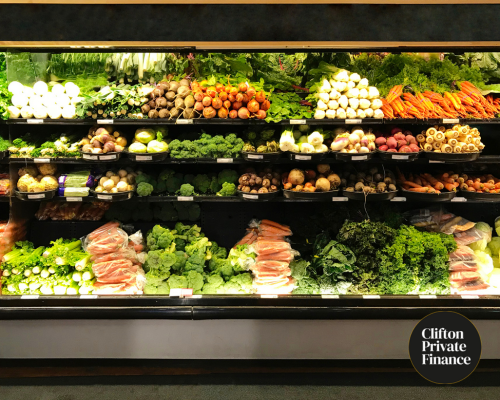A VAT loan is a specialised financial product designed to pay a business's quarterly VAT payment to HMRC.
Value-added tax (VAT) is ubiquitous in UK businesses. It's a form of consumption tax and is levied on the price of a product or service at each stage of production, distribution, or sale to an end consumer.
It's a multifaceted tax system that impacts a vast array of goods and services, with various rates and categories applied depending on the nature of the product.
For businesses, particularly those with a turnover exceeding £85,000, VAT registration and payment to the HM Revenue and Customs (HMRC) are legal obligations that need to be met.
The collected VAT, minus any reclaimed tax, must be paid to the government regularly – usually quarterly – and the deadlines are unforgiving.
If not handled correctly, it's a complex system coupled with significant financial implications, making VAT a critical area for business owners to navigate.
Importance of VAT Loans for Businesses
The obligation to pay VAT can present a significant cash flow challenge, especially for Small and Medium Enterprises (SMEs).
The quarterly payment of VAT can create a sudden financial burden, leading to what many refer to as "cash flow shock", which is where VAT loans come into play.
VAT loans are specialised financial products designed to assist businesses in paying their VAT bills on time.
Businesses can pay their tax and spread the burden into manageable instalments by opting for a VAT loan, which provides a buffer against penalties and surcharges while enhancing financial security.
For many experienced business owners, VAT loans have become essential tools for maintaining smooth financial operations, allowing them to begin strategic financial planning.
Whether you're an entrepreneur looking to manage cash flow or a financial expert seeking comprehensive insights into VAT loans, this article will serve as a valuable resource to help you get it right for your business.

Understanding VAT
Value-added tax (VAT) is a tax that operates at various stages of the production, distribution, and sale process.
Rather than being a one-time charge, VAT is applied at each stage of a product's journey, from raw materials to the final sale to the consumer.
This multifaceted approach ensures that VAT is collected incrementally, reflecting the value added at each phase.
In the UK, most goods and services are liable for VAT, and VAT-registered businesses act as intermediaries, collecting the tax on behalf of the government and paying it at regular intervals. The system allows businesses to reclaim the VAT paid, provided they are registered for VAT and the ultimate consumer is a business.
Rates and Categories
VAT is applied at different rates in the UK, depending on the nature of the goods or services. The primary categories and rates include:
The government determines these rates and reflects the perceived necessity or luxury status of different products.
VAT Collection and Payment Methods![]()
Understanding the collection and payment of VAT is crucial for businesses, as it determines how they calculate the VAT payable to HMRC.
Several methods are commonly used, each with its characteristics and suitability for different types of businesses:
Standard Method
Under the standard method, all VAT-liable sales invoices and purchases are used to calculate the VAT payable. This includes invoices for which the business has not yet received payment and bills they have not yet paid during the accounting period.
While this method is widely used, it may cause cash flow issues for some businesses due to the timing of payments and receipts.
Cash Accounting Method
The cash accounting method only considers income from tax-liable invoices and costs from VAT-liable purchases that have been paid. This method can reduce cash flow strains by aligning VAT calculations with actual cash flow. However, it may not be suitable for businesses that regularly reclaim more VAT than they pay.
Flat Rate Method
Designed for businesses with a turnover of less than £150,000 (excluding VAT), the flat rate method allows businesses to pay a flat rate of VAT to HMRC.
They keep the difference between what they charge their customers and pay to HMRC but cannot reclaim the VAT on their purchases, except for certain capital assets over £2,000.
Different types of businesses have different flat rates (e.g., builders at 9.5%, and hairdressers at 13%). This method simplifies VAT calculation, reducing administrative burdens on small businesses.

What is a VAT Loan?
VAT loans are a financial tool enabling businesses to pay their quarterly VAT bills while managing their finances more flexibly.
Navigating the complexities of VAT payments can be challenging for businesses, especially when it comes to maintaining cash flow stability.
This section explores the different types of VAT finance, their eligibility criteria, loan amounts, funding terms, and the application process and associated costs.
Types of VAT Loans
Standard VAT Loans
Standard VAT loans are designed to aid businesses in paying their regular quarterly VAT payments to HM Revenue and Customs (HMRC).
- These loans offer quick and straightforward solutions, allowing businesses to repay the borrowed sum in monthly instalments tailored to their needs.
- The core purpose is to eliminate the stress of hefty one-time payments and provide financial security through manageable repayment terms.
VAT Bridging Loans
VAT bridging loans are specific short-term financing solutions used to pay VAT due on commercial property purchases.
- These loans address unexpected VAT liabilities that may arise during the later stages of a transaction.
- By providing a bridge to cover the tax, these loans ensure the smooth completion of the sale and prevent unexpected costs from derailing the process.
Read blog: SaaS Finance | How to Get SaaS Funding & How it Works

Eligibility Criteria
The eligibility for VAT finance varies depending on the lender, but common criteria include:
- Being a VAT-registered business
- Having a turnover of more than £85,000 (excluding VAT)
- Being a UK-base business
- Trading for more than one year
- Meeting specific credit checks and financial reviews
Different providers may offer tailored solutions to suit various business types, including manufacturing, consulting, professional services, agricultural, construction, etc.
Loan Amounts and Funding Terms
VAT loans can range from as low as £2,000 to as much as £5 million.
- The sum borrowed will depend on the unique circumstances of the business and its eligibility.
- The loan duration typically varies between 3 months and one year, with fixed monthly payments.
- This flexibility ensures businesses can choose terms that align with their cash flow cycles and financial goals.
The Application Process
Interest Rates and Additional Costs
Interest rates for VAT loans vary and may be higher than other forms of business loans.
Typical interest rates for borrowers with good eligibility across a 3-month loan duration have historically been in the region of 4-6%, but it varies largely on the wider market for interest rates in the economy at the time.
Evaluating the full cost, including any additional charges, is essential to determine the most suitable financing option.
Benefits and Drawbacks of VAT Loans
The utilisation of VAT loans presents a multifaceted decision for businesses, encompassing both advantages and disadvantages.
Advantages
Avoidance of Penalties: Paying VAT bills on time is a legal obligation, and late payments can lead to substantial penalties and surcharges. By utilising VAT loans, businesses can ensure timely payment to HMRC, effectively avoiding late payment fines that can amount to up to 15% of the bill.
Cash Flow Management: Quarterly VAT payments can create cash flow shocks for businesses, especially for SMEs. VAT loans offer the flexibility to spread the cost of the VAT bill over monthly instalments, smoothing out cash flow and enabling better financial management.
Investment Opportunities: Freeing up funds using a VAT loan can enable businesses to invest in other crucial areas, such as expansion, equipment purchase, or marketing efforts. The ability to hold onto available cash longer allows for the strategic allocation of resources to foster growth.

Disadvantages
Interest Rates: While VAT loans offer convenience and flexibility, they often come with higher interest rates than other business loans. Interest rates can vary depending on the borrower's creditworthiness and market rates, with some as low as 5% for a 3-month duration. Businesses must weigh the cost of interest against the benefits to determine if a VAT loan is the most economical choice.
Suitability Concerns: VAT loans are not a one-size-fits-all solution. Different types of VAT loans and payment methods, such as cash accounting or flat rate methods, cater to various business needs. Understanding the specific needs of the business, the suitability of the loan type, and the potential impact on cash flow is essential. For example, the flat rate method may not be suitable for businesses that regularly reclaim more VAT than they pay.
Application Process: The application process for VAT loans is typically streamlined, with decisions made within 24 to 48 hours in most cases. This contrasts with traditional business loans, which might require more extensive documentation and longer approval times.
Purpose and Flexibility: VAT loans are specifically designed to pay VAT bills, with funds paid directly to HMRC in many cases. Other business loans offer more flexibility in utilising funds, from expansion and capital investment to general working capital needs.
Loan Amounts: VAT finance ranges from as low as £2,000 to as much as £5 million, offering a wide spectrum for various business sizes. Other business loans might have different minimum and maximum thresholds, depending on the lender and the business's creditworthiness.
Suitability for Different Business Needs and Sizes
SMEs and Cash Flow Management
VAT loans are particularly appealing to SMEs that experience cash flow shocks due to quarterly VAT payments. The ability to spread the cost and avoid penalties can be a lifeline for smaller businesses.
Seasonal Businesses
For businesses with seasonal demand or variable cash flow, VAT loans offer a solution to manage VAT payments during slow periods. Other financing options might not provide the same level of adaptability to these unique business challenges.
Large-Scale Investments
While VAT loans are tailored to address VAT liabilities, other business loans might be more suitable for large-scale investments, such as purchasing equipment or funding expansion plans. The broader purpose and potentially lower interest rates of other loans might make them a more fitting choice for such endeavours.












